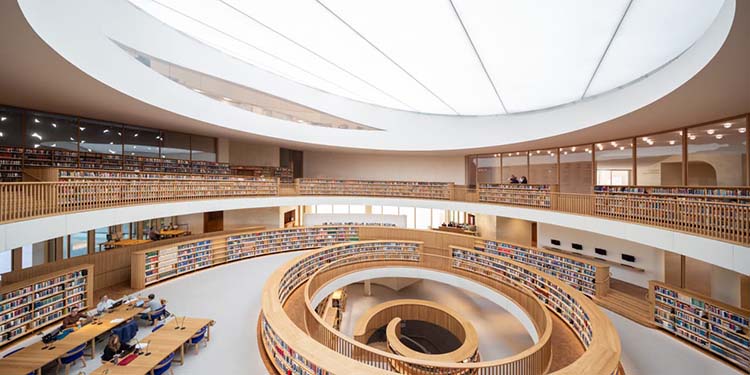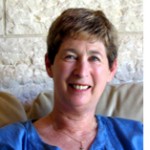

MEVASSERET ZION, Israel — When I was a graduate student at the Hebrew University’s Givat Ram campus many years ago, before the Six Day War and the University’s return to its original campus on Mount Scopus, the National Library building served as a haven and focal point where one could sit and study in an atmosphere of silence and detachment from the world outside. The fact that it was located on the university campus meant that it was easily accessible for all students. The changing exhibits provided additional interest, and the enormous, colourful stained-glass windows by Mordechai Ardon helped to create the library’s unique atmosphere. Those windows remain in their place as they could not be safely moved to the new building.
The new National Library building is no longer part of the Hebrew University’s Givat Ram campus, being situated about half a kilometer away from it, opposite the Knesset, in close proximity to government buildings, the Israel Museum and other museums. It constitutes an integral part of the concept formulated by Israel’s founding fathers of physically uniting Israel ‘s spiritual and practical heritage with its governing body in the entire hill area overlooking Jerusalem known as Givat Ram. The building itself provides an impressive yet welcoming space for anyone seeking to use its facilities, whether to study, view any of its exhibits, engage in research activity, or meet with other scholars.
Several art works adorn the library’s walls and spaces, both inside and outside the building, serving to underline the Jewish people’s connections with the Bible and other writings, as well as echoing aspects of the Land of Israel. The library also contains collections of books, manuscripts and other documents bequeathed or donated by Jewish and Israeli intellectuals, as well as unique collections such as Albert Einstein’s letters, Isaac Newton’s contemplation of the Bible, and the unique Gershom Shocken Collecetion of Kabbalah and Hasidism.
When I visited the Library a few weeks ago the first thing that caught my eye was a huge, colorful wall containing hundreds of portraits and dedicated to the memory of all those killed by Hamas in the 7th October massacre and the soldiers who have fallen in the current war in Gaza.
The new building has been designed with the intention of fulfilling the needs of readers and users while meeting green construction principles and maintaining energy sustainability. The stone block of the building is topped by a concave roof with a large circular skylight enabling natural light to enter the central reading room without inflicting undue damage on the books inside. Crevices in the external walls serve as windows, also allowing light to enter in a way that is neither obtrusive nor harmful to the books inside.
Originally founded in 1892, the Library now holds over five million books, periodicals, special collections, rare manuscripts, personal and institutional archives, newspapers, maps and photographs as well as the National Music Archives comprising records, compact discs, audio recordings and digital files. Through its collections the National Library represents Israeli society in all its diversity.
*
Dorothea Shefer-Vanson is an author and freelance writer residing in the Jerusalem suburb of Mevasseret Zion. She may be contacted via dorothea.shefer@sdjewishworld.com
Yes! Finally someone writes about free books.